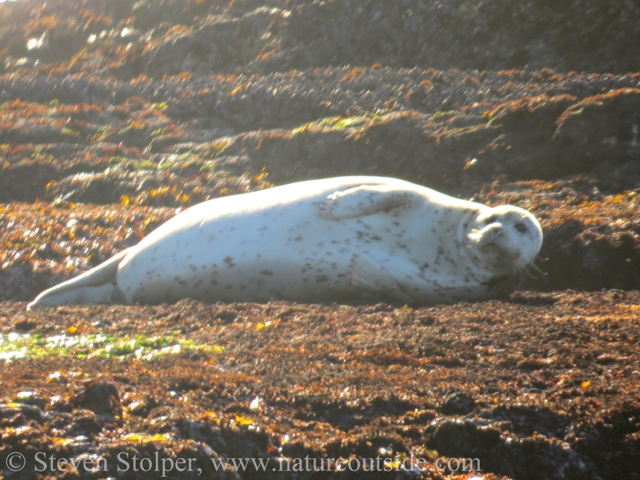
As I mentioned in my earlier post, the coast offers special hikes unlike those in the mountains or desert. Chief among them is “Tide Pooling.” These hikes along rocky coastlines allow you to gaze into the clear pools of the intertidal zone. In this zone the seabed is exposed to the air at low tide and submerged at high tide.
With my thermos of hot chocolate, I continue my hike through the Fitzgerald Marine Reserve. I’m looking for birds, marine mammals, fish, crabs, anemones, barnacles, chitons, mussels, sea stars, shrimps and snails.
I find an abalone shell. The color variation on its underside is striking.
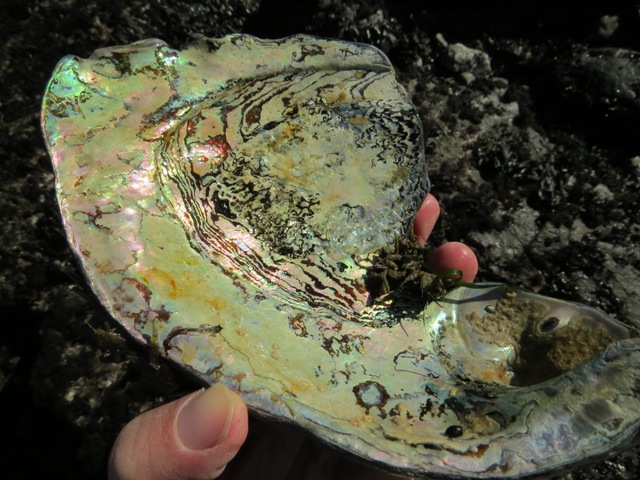
Nearby, harbor seals have hauled-out on the rocks. They choose rocks that are surrounded on all sides by water. This prevents overeager tourists from approaching too closely. As a precaution, rangers lay out cones in a 40-yard radius from the resting seals in accordance with the Marine Mammal Protection Act. A ranger patrols the line of cones to ensure the animals are not disturbed.
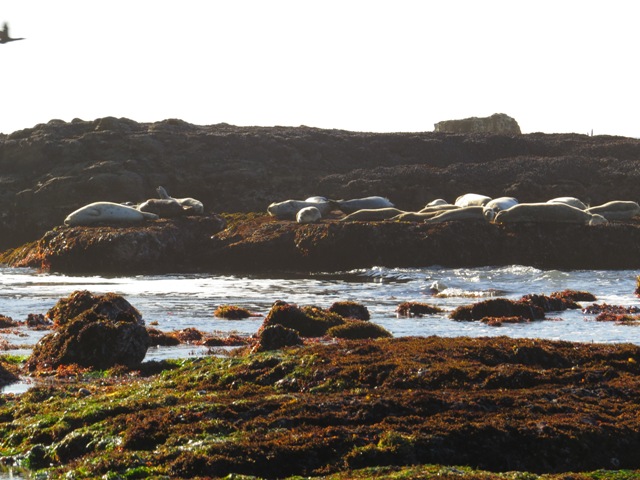
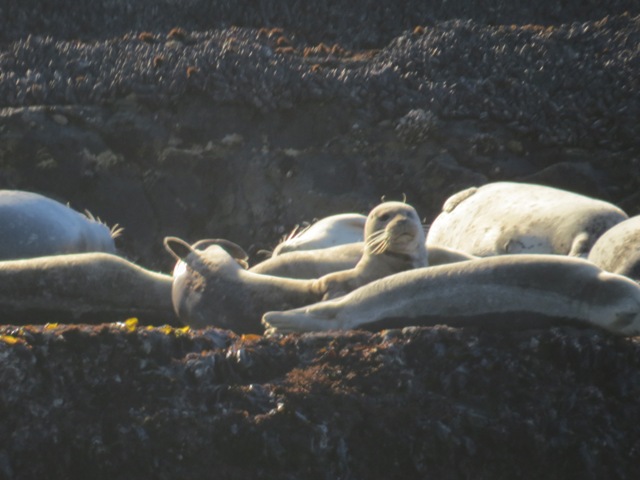

I also spied a half-eaten jellyfish in one of the pools. I believe it is an egg-yolk jelly. However it could also be a moon jelly. It was about 9 inches in diameter.
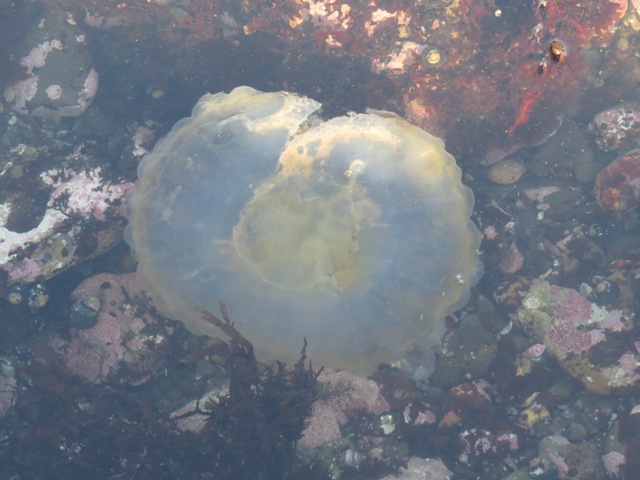
There were also crabs. One had seen better days but this decorator crab was rather feisty. Like the name suggests, Decorator crabs camouflage their shells by “decorating them” with local materials.
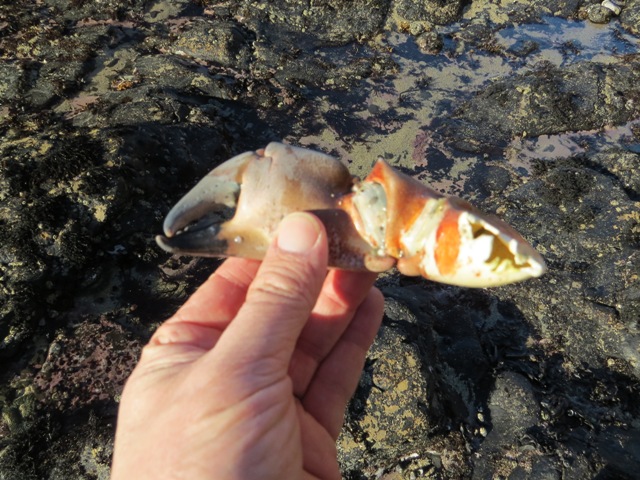
This crab had seen better days (claw only)
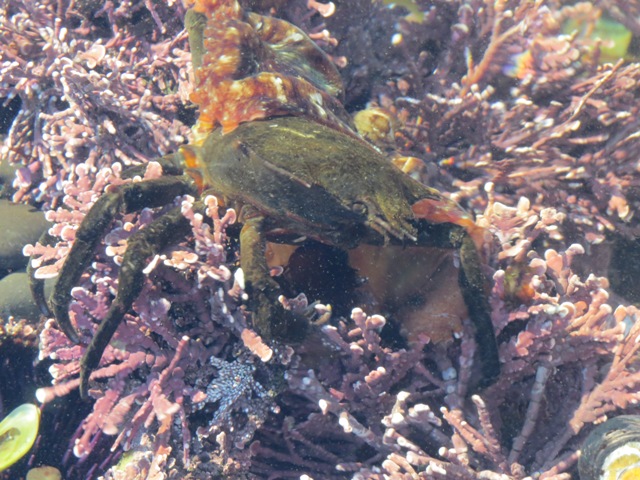
Decorator Crab (Oregonia gracilis)
Sea urchins were plentiful. A “holy grail” of fire making is to find a hand-size rock with a hole drilled into it by an urchin or rock boring clam (Penitella penita). It makes the ideal bearing block for a bow drill set. Several candidates presented themselves. But the area is a protected marine reserve so I will have to look elsewhere.
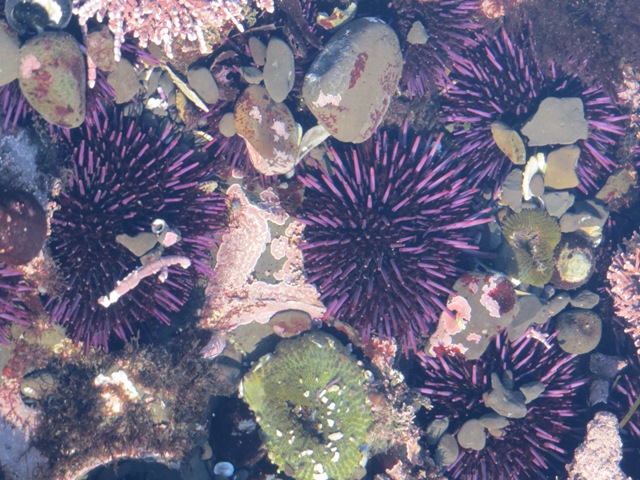
Purple Sea Urchins (Strongylocentrotus purpuratus)
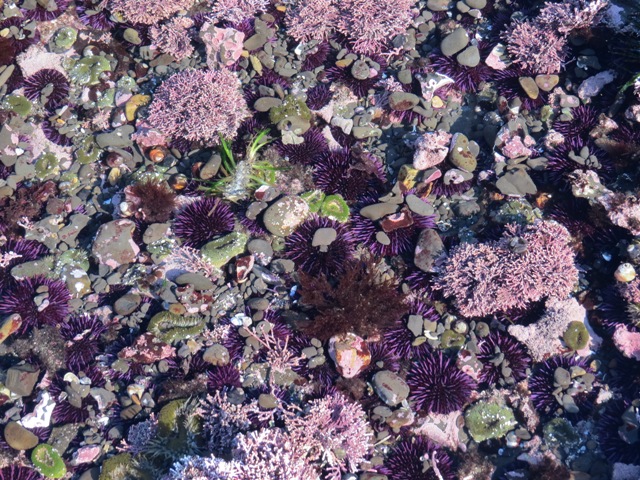
Hope you have enjoyed the trip! If you have visited tidepools, let me know in the comments below.
For fun facts and useful tips, join the free Bushcraft Newsletter.



Leave a Comment